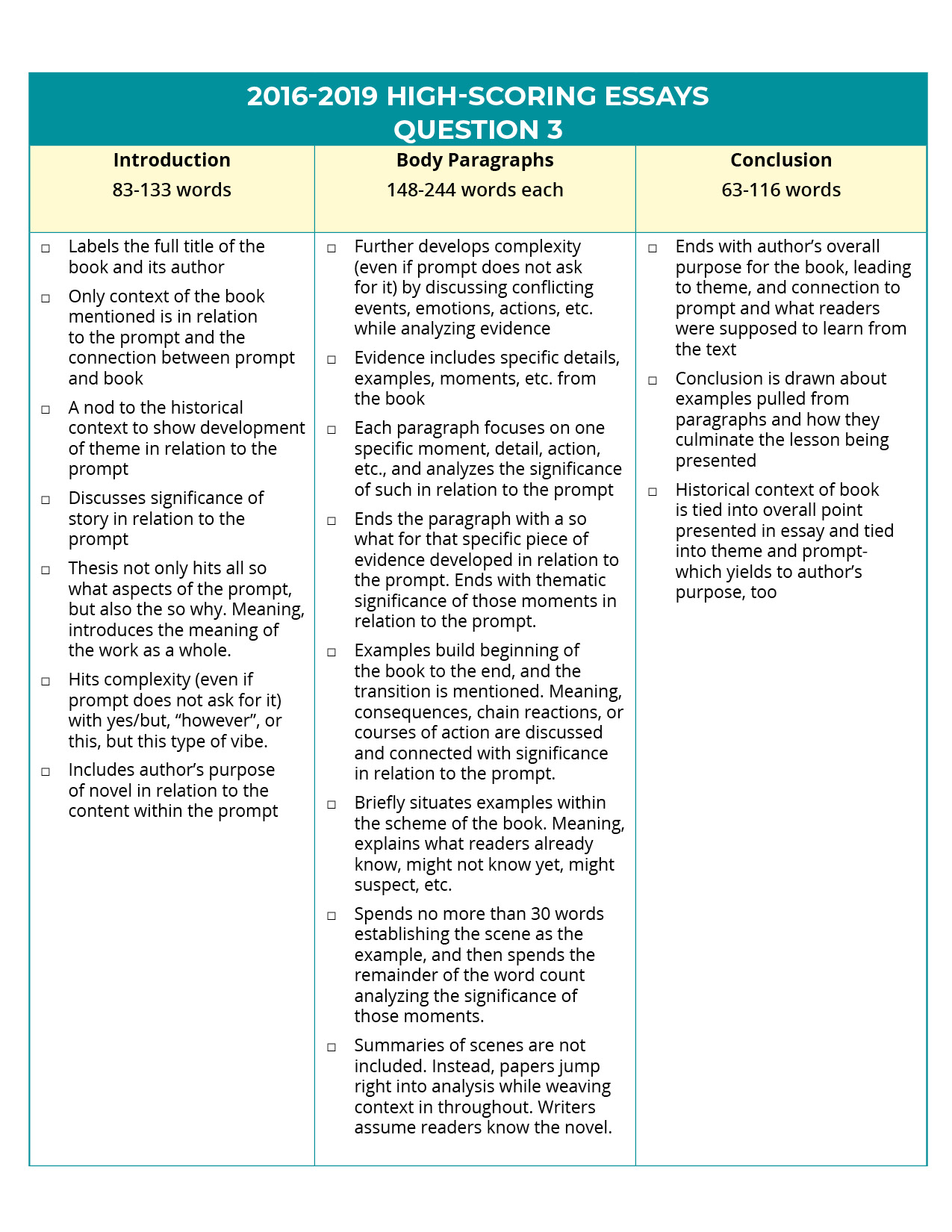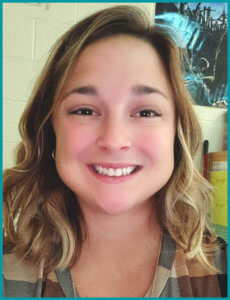by Michelle Lindsey
This process started with the chart I created for the Question 1 Poetry essay. You can read through the entire process here. I dug through the high-scoring samples released by the College Board and compiled the amazing details and writing techniques incorporated within those essays into a checklist for my kids. When I released that chart into the AP English Literature world, the feedback I received was very encouraging. Many teachers requested the Question 3 chart I was wrapping up the Question 1 chart, and I am happy to oblige. It takes a village… am I right?
I did the same thing for Question 3, which was actually even more helpful to my kids than the Question 1 chart because they still struggled with navigating their evidence. Finding that bridge from summary to analysis was always so hard for them because they knew they needed more words in their paragraphs—they just didn’t know how to get there. This checklist gave them the criteria they were missing.
Here’s what I did:
- I combed through every high-scoring sample paper for Question 3, ranging from 2016 to 2019. 2020 was a wild year and I excluded those essays from my research. Anything before 2016 felt irrelevant and less timely.
- While deep diving into these papers, I collected data. I found not only word count ranges per paper, but also word count ranges per paragraph!
- Not only did I determine average word counts, but I also compiled a massive list of everything these sample essays did RIGHT that is NOT necessarily detailed within the rubric.
- Once I had my list for each essay, I cross referenced. I found commonalities between those high-scoring papers.
- Once I found those commonalities, I created a checklist for my kids.

Does this magical list that I labored over for weeks equal the sophistication point? Who knows! I can never guarantee that point to my kids. Did their essay writing improve vastly after giving them this list? Oh, yes, my friends.
Because the success of this list absolutely blew my mind, I felt I had to share the wealth. We use this list not only for planning purposes, but also for self-reflection and peer editing as well. This was a win.
Feel free to download this checklist and use it in your classroom!

Michelle Lindsey has been a high school teacher in Florida for nine years, and currently teaches AP® Capstone as well as literature and writing courses.
 Help
Help